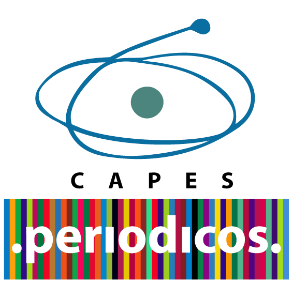Applicability of Electronic Games in Geocience Education: propositions for the game Red Dead Redemption 2
DOI:
https://doi.org/10.5433/2447-1747.2020v29n2p279Keywords:
Videogames, Geosciences, Education.Abstract
While videogames have been a popular form of entertainment for decades, only recently they have caught attention of the academy. While there are a burgeoning number of video game scholars in the new media and Gamestudies, geography is just beginning to address the games and their associated practices. This work has a research problem to understand how the game Red Dead Redemption 2 contributes to the teaching of this science. Thus, its objective was to investigate geographic elements of the game as subsidies for teaching aspects of physical geography, for students from the 9th grade. This paper use of the methodology created by geographer James Ash (2009) to analyze Gamestudies epistemology through a geographical approach, which proposes to underline the geographies in videogames (in terms of representations), and then make use of the game Red Dead Redemption 2 as a pedagogical tool for teaching some aspects of physical geography to 8th grade students onwards. As a result of this work a survey of several images of the game was carried out that allow the assimilation by representation of various aspects of Geography and Geology, such as relief and specific rock formations, which, once applied, may bring to light a systematic geographical approach. videogames in their various possibilities of analysis and will allow the understanding of the interconnection of games with the teaching of geography.Downloads
References
ASH, J. Emerging spatialities of the screen: video games and the reconfiguration of spatial awareness. Environment and Planning A 41 (9), pp. 2105–2124, 2009.
BOELLSTORFF, T. Coming of age in second life: an anthropologist explores the virtually human. Princeton, NJ: Princeton University Press, 2010.
BOGOST, I. Unit operations: an approach to video game criticism. Cambridge: MIT Press, Cambridge, 2006.
CLAVAL,P. As abordagens da Geografia Cultural. In: CASTRO, I.; GOMES, P. e CORREA, R. (org.) Explorações geográficas. São Paulo: Bertrand Brasil, 1997.
DODGE, M. Mapping cyberspace. London: Routledge, 2009.
DRUMMOND, W. Representação espacial nos videogames: explorando o caso Simcity 4. Dissertação de Mestrado - Universidade Federal do Rio de Janeiro, Programa de Pós Graduação em Geografia, Rio de Janeiro, 2014.
HIGGIN, T. Blackless fantasy: the disappearance of race in massively multiplayer online role-playing games. Games and Culture 4, pp. 3–26, 2008.
JUUL, J. The open and the closed: game of emergence and games of progression. Tampere: Tampere University Press, 2002.
LEONARD, D. Young, black (& brown) and don’t give a fuck: virtual gangstas in the era of state violence. Cultural Studies Critical Methodologies 1, pp. 248–272, 2009.
LONGAN, M. Playing with landscape: social process and spatial form in video games. Aether: the journal of media geography 11, pp. 23–40, 2008.
LOWOOD, H. Game Studies Now, History of Science Then. In: Games and Culture 1(1):78- 82, 2006.
LÜDKE, Menga. A. Pesquisa em educação: abordagens qualitativas. São Paulo: EPU, 1986.
POWER, M. Digitized virtuosity: video war games and post-9 / 11 cyber-deterrence.
Security Dialogue 38, pp. 271–288, 2007.
REEVES, S. Experts at play: understanding skilled expertise. Games and Culture 4 (3), pp. 205-227, 2009.
RELPH, E. Place and Placeness. London, Pion, 1976.
SHAW, A. Putting the gay in games: cultural production and GLBT content in video games. Games and Culture 4, pp. 228–253, 2009.
TUAN, Yi-Fu. Espaço e Lugar: a Perspectiva da Experiência. São Paulo, DIFEL, 1983.
WITHEFORD, N. D.; PEUTER, G. D. Games of empire: global capitalism and videogames. Minnesota: University of Minnesota Press, 2009.
Downloads
Published
How to Cite
Issue
Section
License
Copyright (c) 2020 GEOGRAFIA (Londrina)

This work is licensed under a Creative Commons Attribution-NonCommercial 4.0 International License.
The authors retain the copyright simultaneously licensing the work under the Creative Commons Attribution-NonCommercial 4.0 International license. This license allows third parties to distribute, remix, adapt, and develop the material in any medium or format for non-commercial purposes, giving due credit for authorship and initial publication in this journal.
The journal reserves the right to make normative, orthographic, and grammatical changes to the originals in order to maintain the standardized language and the credibility of the vehicle while still respecting the authors' writing style. Conceptual suggestions, changes, or corrections will be communicated to the authors when necessary.
The opinions expressed by the authors of the articles are their sole responsibility.
This work is licensed under a Creative Commons Attribution-NonCommercial 4.0 International license.















